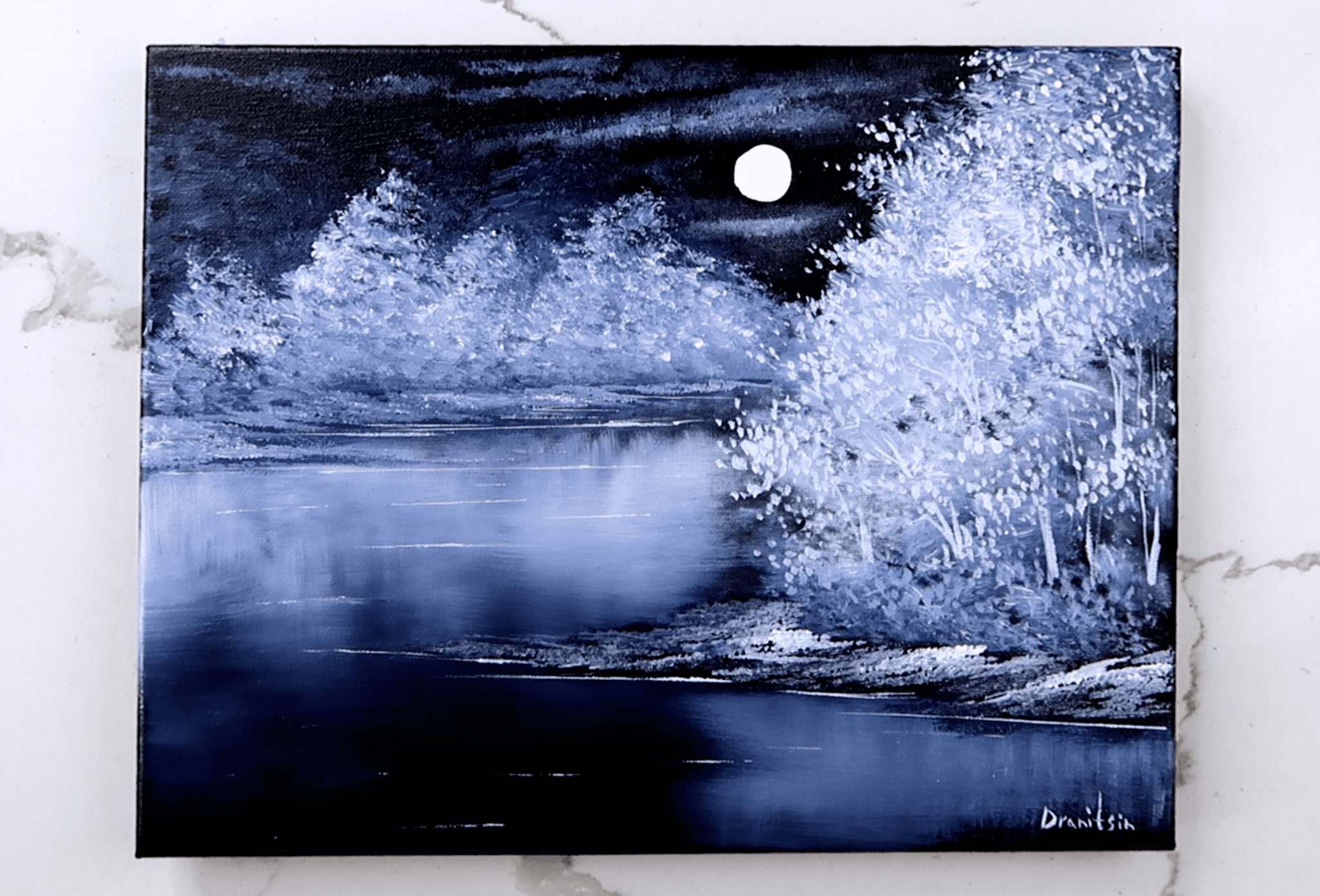In today’s fast-paced and often noisy world, the beauty of simplicity can be a breath of fresh air, especially in the realm of art. Simplicity in acrylic landscape painting allows artists to capture the essence of a scene without overwhelming the viewer with complexity. By distilling your subject down to its fundamental elements, you can create paintings that are both striking and profound. In this blog post, we will explore the importance of embracing simplicity in your acrylic landscape painting practice and provide practical tips for mastering this art form.
Understanding the Power of Simplicity
1. The Essence of Simplicity in Art
Simplicity in art refers to the ability to convey meaning and emotion using minimal elements. This approach allows viewers to connect with the work on a deeper level.
- Focus on Key Elements: By simplifying your composition, you draw attention to the most important aspects of the landscape, such as light, color, and form.
2. Benefits of a Simple Approach
Simplicity can lead to enhanced creativity and expression in your acrylic landscapes:
- Clarity of Vision: A simplified composition helps articulate your artistic vision clearly, allowing viewers to engage with the piece more effectively.
- Reduced Overwhelm: Fewer elements mean less visual clutter, making it easier for both you as the artist and your audience to appreciate the work.
Tips for Embracing Simplicity in Acrylic Landscape Painting
1. Limit Your Color Palette
A. Choose a Few Key Colors
Using a limited color palette can create harmony and cohesion within your painting.
- How to Implement: Select 3 to 5 colors that complement each other. This approach not only simplifies your choices but also enhances your ability to create depth and unity in your landscapes.
Tip: Consider using analogous colors (colors that are next to each other on the color wheel) to maintain a harmonious look.
2. Focus on Composition
A. Use the Rule of Thirds
Arranging your composition thoughtfully can significantly impact the effectiveness of your painting.
- How to Apply the Rule: Divide your canvas into thirds both horizontally and vertically, and place your focal point at one of the intersections. This technique creates a balanced and pleasing composition without overcrowding the scene.
B. Embrace Negative Space
Incorporating negative space can enhance balance and simplicity in your landscape.
- Technique: Leave parts of your canvas empty or utilize soft colors for areas that aren’t the focal point. This not only emphasizes your main subject but also provides visual breathing room.
3. Capture the Essence of Light
A. Observe Natural Light
Light plays a crucial role in landscape painting, often setting the mood and atmosphere of a piece.
- Study Different Times of Day: Observe how light changes in different weather conditions and times of day. This understanding can help you simplify and focus on the light’s quality rather than getting caught up in details.
B. Use Broad Strokes to Represent Light
Instead of detailed renditions of light and shadow, use broad, sweeping strokes to convey the essence of light.
- Technique: Use large brushes or palette knives to apply paint smoothly and create soft gradients representing light. This method can simplify your work while enhancing its emotive quality.
4. Simplify Your Subject Matter
A. Select a Singular Focus
Instead of trying to capture every detail in a landscape, choose one main element to focus on, such as a tree, a mountain, or a body of water.
- How to Execute: Paint the chosen subject in detail while keeping the background loose and abstracted. This technique will draw the viewer’s eye directly to your focal point, reinforcing the theme of simplicity.
5. Practice Minimalism
A. Create Quick Studies
Engage in quick studies to practice simplifying your work. Set a timer for a specific period (e.g., 15-20 minutes) and focus on capturing the essence of a scene without overthinking details.
- Benefit of Quick Studies: This approach encourages spontaneity and helps loosen up your painting style. It can also serve as a warm-up exercise before tackling larger pieces.
6. Resist Overworking
A. Know When to Stop
One of the challenges artists face is the urge to keep adding detail. Learning to recognize when your painting is complete is crucial.
- Technique: Step back occasionally during your painting process to evaluate your work from a distance. This perspective can help you determine if further detail is necessary or if simplicity is the key to the painting’s success.
Conclusion: The Beauty of Simplicity
Mastering the art of simplicity in acrylic landscape painting allows you to express the beauty and complexity of nature without unnecessary distractions. By focusing on essential elements—color, composition, light, and subject matter—you can create stunning works that resonate deeply with viewers. Embrace simplicity as a powerful tool in your artistic toolkit, and watch as your landscapes come to life in new and profound ways.
At Urart Studio, we are dedicated to supporting your artistic journey with a wealth of resources. Explore our extensive collection of step-by-step acrylic painting tutorials, valuable painting tips, and a wide array of art supplies designed to inspire your creativity. Don’t forget to visit our original landscape painting art gallery and our engaging YouTube channel for practical demonstrations and inspiration.
Explore More at Urart Studio!
Ready to embrace simplicity in your acrylic landscape painting? Visit our website for a wealth of resources:
- Browse our selection of art supplies and tools at Shop.
- Discover valuable painting tips at Painting Tips.
- Follow our step-by-step painting instructions at Step-by-Step Painting Instructions.
Unlock the beauty of simplicity and elevate your artistic expression today!



Leave a Reply
You must be logged in to post a comment.